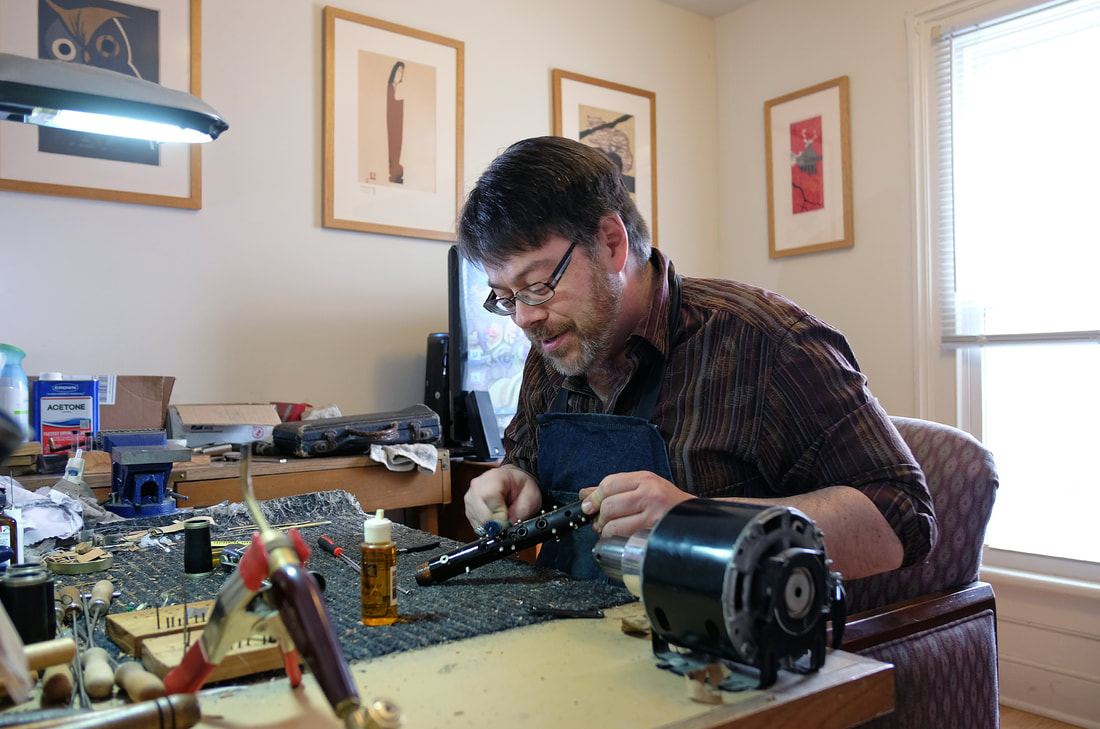 Having just enjoyed a postprandial glass of wine, I'm going to take a chance on a topic I might not otherwise address: the ostensible primacy of grenadilla wood as the clarinet construction material of choice! Now, I know that I will probably ruffle some feathers with this, but I've played (and restored) a lot of clarinets in my day and have noticed a couple things: 1) the performer's mouthpiece, reed, oral cavity, articulation, breath support and tonal concept seem to have more to do with the resultant tone than a specific clarinet, and 2) the material from which the instrument is constructed plays less of a role in its tone than the quality of said construction plus setup and its interaction with all the factors mentioned in #1. The first point is fairly easy to establish in your own practice: if you play classical music, use a narrow tip, large chamber mouthpiece with a stiff, French file cut natural reed and are channeling Reginald Kell as your Tone God, you will have approximately the same dark, focused tone on a Buffet, Leblanc or Thibouville Freres. Likewise, if you play Jazz, use a Vandoren 5JB with a 2.5 Fibracell reed, and love Peanuts Hucko, the bright, flexible tone will shine out from an Orsi to an A. Robert. The ergonomics of key-work and the back-bore pressure will vary, it is true, along with other, subtler factors, but many of these are attributable to the quality of the pad work and the interaction of your mouthpiece with the bore size/taper of the instrument at hand. A change in mouthpiece or brand of reed would result in a more noticeable change of tone! The second can only be demonstrated with access to a number of instruments over time, which access most teachers and performers don't have, unless they are the kind of hardened collector who has the luxury of both copious funds and unencumbered hours. Being exactly that type myself, I have had the chance to play a variety of wood, hard rubber, metal, and composite clarinets in different keys and different fingering systems and believe that the material has a limited impact on the tone, intonation and play-ability of the instrument. To be continued....
4 Comments
jeremy
9/27/2013 01:45:18 pm
Thanks Tim, I'd welcome a guest column on metal clarinets, if you are ever so inclined...
Reply
Cassio
9/29/2013 08:06:17 am
Yes, totally agree.
Reply
8/27/2014 03:02:53 am
Hi,
Reply
Your comment will be posted after it is approved.
Leave a Reply. |
Archives
February 2024
AuthorThe Licorice Shtick Blog is the creation of the Vintage Clarinet Doctor, a Winston Salem, NC based woodwind instrument repair shop specializing in vintage and antique clarinets, saxophones, and the occasional flute. Categories |

 RSS Feed
RSS Feed